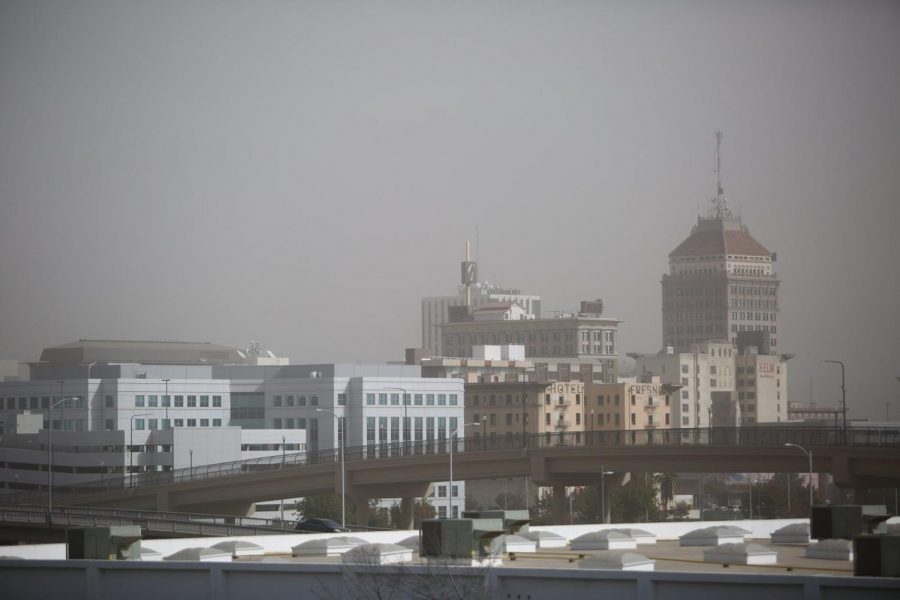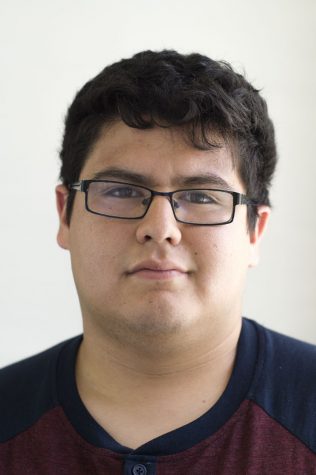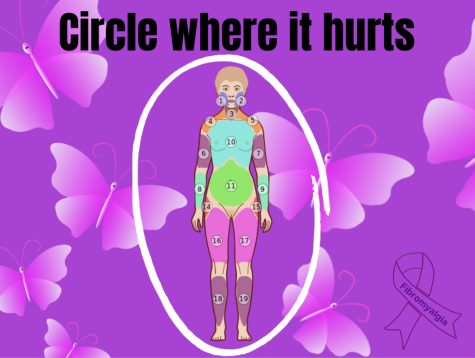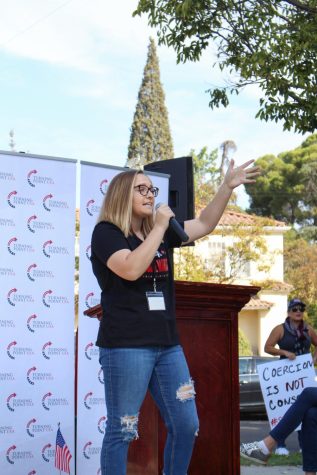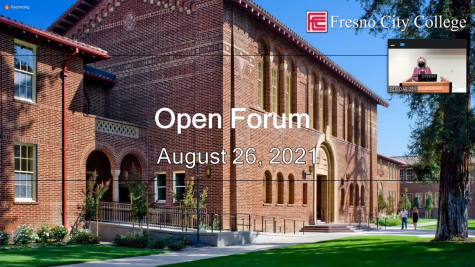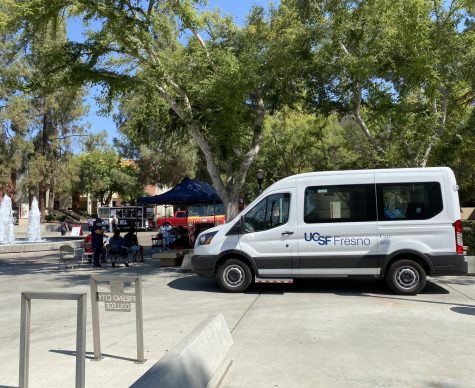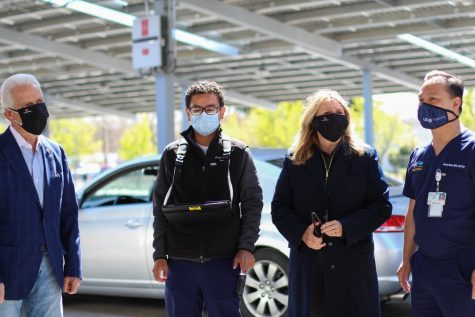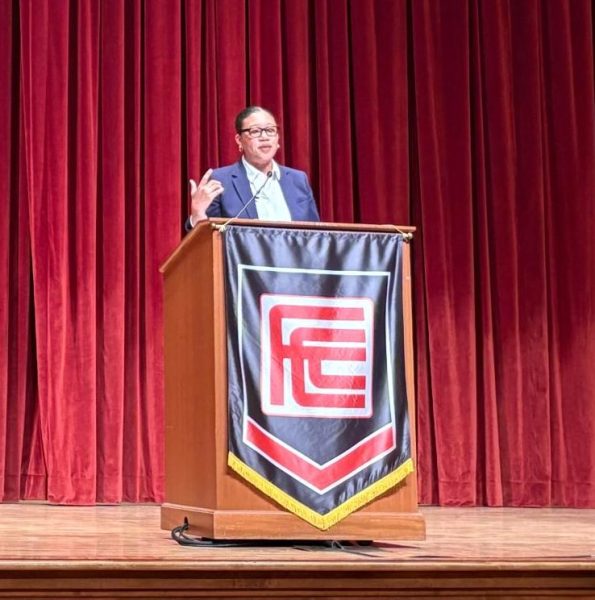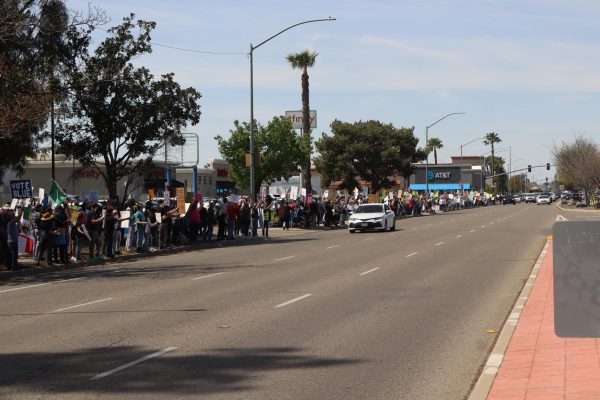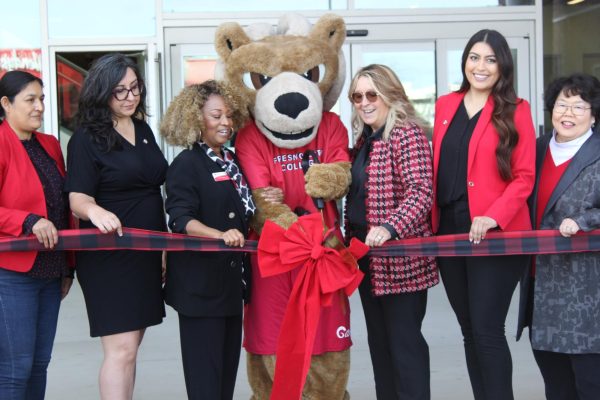Wildfires Attack California and the Valley Can’t Breathe
As Californians everywhere flee from fires, Central Valley residents are left choking on the ashes.
California’s Central Valley currently sits surrounded by a barrage of wildfires ranging north, east and south of the agricultural bowl.
The state is managing the spread of eight wildfires, but since the bulk of the fires began in October, Central Valley residents have endured limitations on outdoor activity, deteriorating air quality and the worry of endangered loved ones being far from home.
The wildfire’s effects on the Central Valley aren’t on its land, but in its lungs. Similarly, you can’t see one of the fires raging in a backyard in the valley, but you can see it inside the home of one of its families.
Luis Rizo is an architectural engineering major in his sophomore year at FCC. His older brother, Jose, is one of the local firefighters who’ve been travelling up and down California helping control the widespread destruction of the wildfires.
“I don’t think my family really sees the full scope of how dangerous this is,” said Luis Rizo, in reference to his brother’s dangerous profession.
“Our whole family doesn’t think too much about what could happen. We know what can happen, but we don’t think it’ll ever happen to him,” he said.
Rizo describes his and his family’s feelings carefully, emphasizing that it’s not any type of neglect that they’re expressing but a feeling of emotional distance, mostly from simple lack of understanding.
“It’s something I don’t really know how to deal with. I know no one else going through this; I don’t have any friends with siblings or relatives that are firefighters, so it’s hard for me to understand what’s going on and what’s at risk,” said Rizo.
He added that the newness of a situation like theirs draws out a sense of unpreparedness and unease. “It’s all new so we don’t know what to expect,” he said.
“Like, what should we prepare for? Should we live knowing that this could be the last time we see or talk to him? Who wants to think that you’re never going to see them again, you know?”
The flames are devouring forestry at rates faster than crews can keep up with, residents living in endangered areas were forced to evacuate their homes and those away from the fires are breathing in air polluted with smoke and ash.
While California experiences its fair share of wildfires, this grouping of blazes sets up to be the worst since 2017, which was historically destructive.
The Los Angeles Times’ California wildfires map has been documenting the fires and regularly updating its information on their development.
The Kincade fire currently raging in Sonoma County is the largest, burning nearly 78,000 acres across 13 days. Higher north, the Ranch fire has already burned nearly 3,000 acres, while the South fire has cleared over 5,000 acres.
To the east, the Taboose fire has burned over 10,000 acres in nearly two months, but Southern California has been bearing the brunt of the destruction.
The Sobrante, Hillside, and Maria fires have sprung up within the past week, with the latter torchingalmost 10,000 acres in a few days. The Saddle Ridge fire has been successfully contained, but not before it destroyed almost 9,000 acres.
The Getty fire is also coming to a close and the Tick fire has already been contained, but over 5,000 acres of incinerated Los Angeles hillside still doesn’t illustrate the weight nearby residents and students felt on their shoulders.
Authorities had to order the evacuation of at least 40,000 people in Los Angeles residencies for days. But students attending UCLA, away from their valley roots, only had classes cancelled for a day.
“I was checking alerts all that morning. The fire was just on the other side of the freeway so all it had to do was crossover and we’d have to be evacuated,” said Denae Vargas, a sophomore at UCLA majoring in economics and native to the Central Valley.
“I didn’t want to go outside because I was so scared that the fire would crossover and I wouldn’t know anything,” she said. “I was scared the whole time and still had to study for my midterms the next day.”
The pressure of being a college student is already well known and well documented; living off of a shoestring budget, while balancing work and school with the future in mind.
But being a young adult with little support to stand on when a fire threatens your living situation presents a different challenge that no one prepares themselves for when they tell mom and dad goodbye for the semester.
“It’s already not easy just worrying about midterms and tests and everything, so the fires are just another worry,” said Preet Bains, a Selma High School graduate who’s now a pre-medical student in his senior year at UCLA.
That same polluted air in Los Angeles eventually gets blown away, but much like the fires in every other direction, the air falls right into the Central Valley.
The weekend before the fires cancelled classes across Los Angeles, Fresno County and its neighboring regions were buried under a blanket of fallout from the wildfires surrounding the area.
The poor air quality didn’t force schools to close, but it threatened athletic activities at Fresno City College.
FCC men’s and women’s soccer teams had home games scheduled for Tuesday, Oct. 29, although they were nearly rescheduled due to unhealthy air conditions.
“The players’ health is always the most important thing, whether it be physical health or mental health, we have to work around that,” said men’s soccer head coach Eric Solberg.
FCC follows an athletic policy recently administered by the NCAA concerning athletic activities in poor air quality conditions.
Even though it’s up to the school’s athletic trainers to monitor the air quality and make the call, Solberg says he still notices when his players are affected in such situations.
“I don’t think the players think about it much, but it affects a couple kids with asthma issues,” said Solberg. Valley residents are finding this to be a growingly prevalent issue and the evidence proves it.
In April 2019, the American Lung Association ranked the Fresno-Hanford-Madera regions fourth in high ozone days in 228 metropolitan areas, second in 24-hour particle pollution out of 217 metropolitan areas and first in annual particle pollution out of 203 metropolitan areas.
In 2016, the California Department of Public Health issued the Fresno County Asthma Profile, revealing that “approximately 176,000 children and adults have been diagnosed with asthma”, and that number is sure to have climbed in the last three years.
California’s wildfires continue to torch not just forestry, but the hopes of Central Valley natives who are gasping for air and grasping for help.
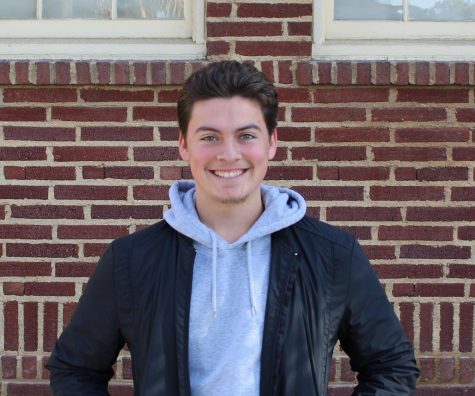
Patrick Henslee is in his third semester at the Rampage, and steps into the role of Managing Editor for the Spring 2020 semester. The 20-year-old is an...

